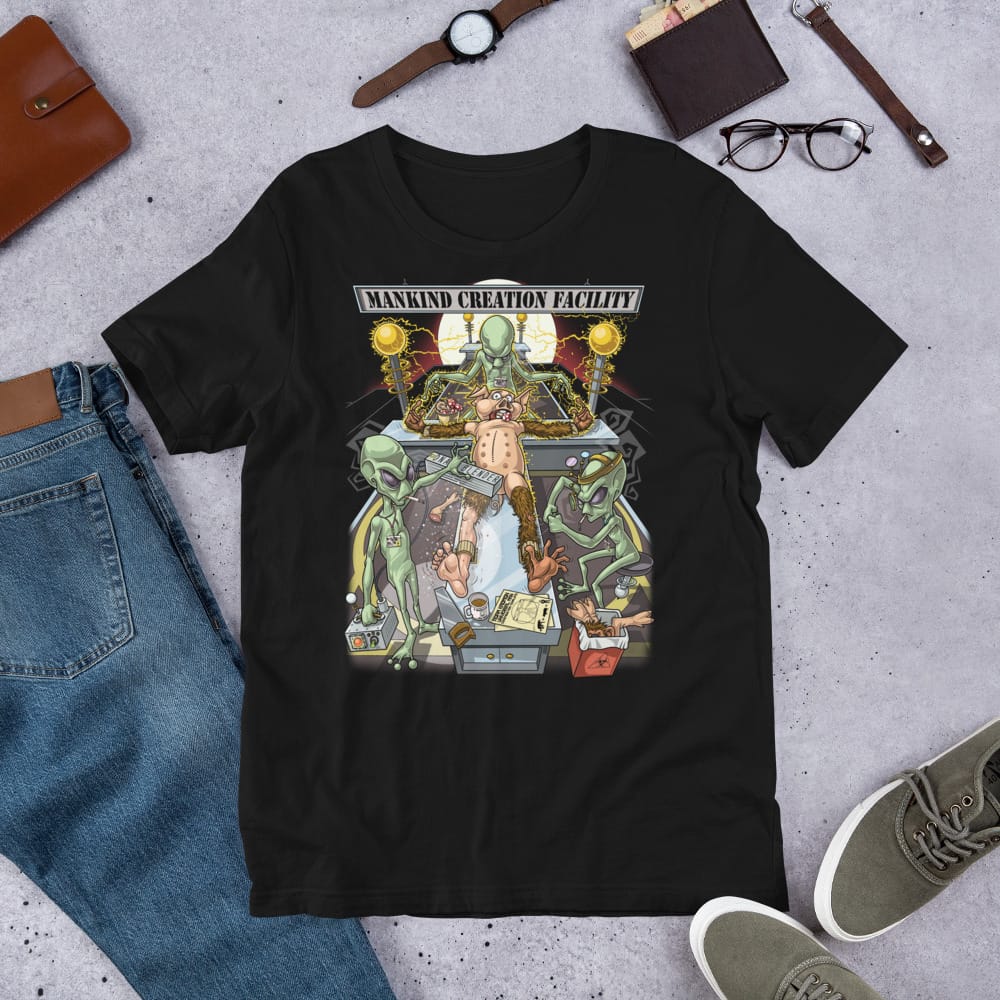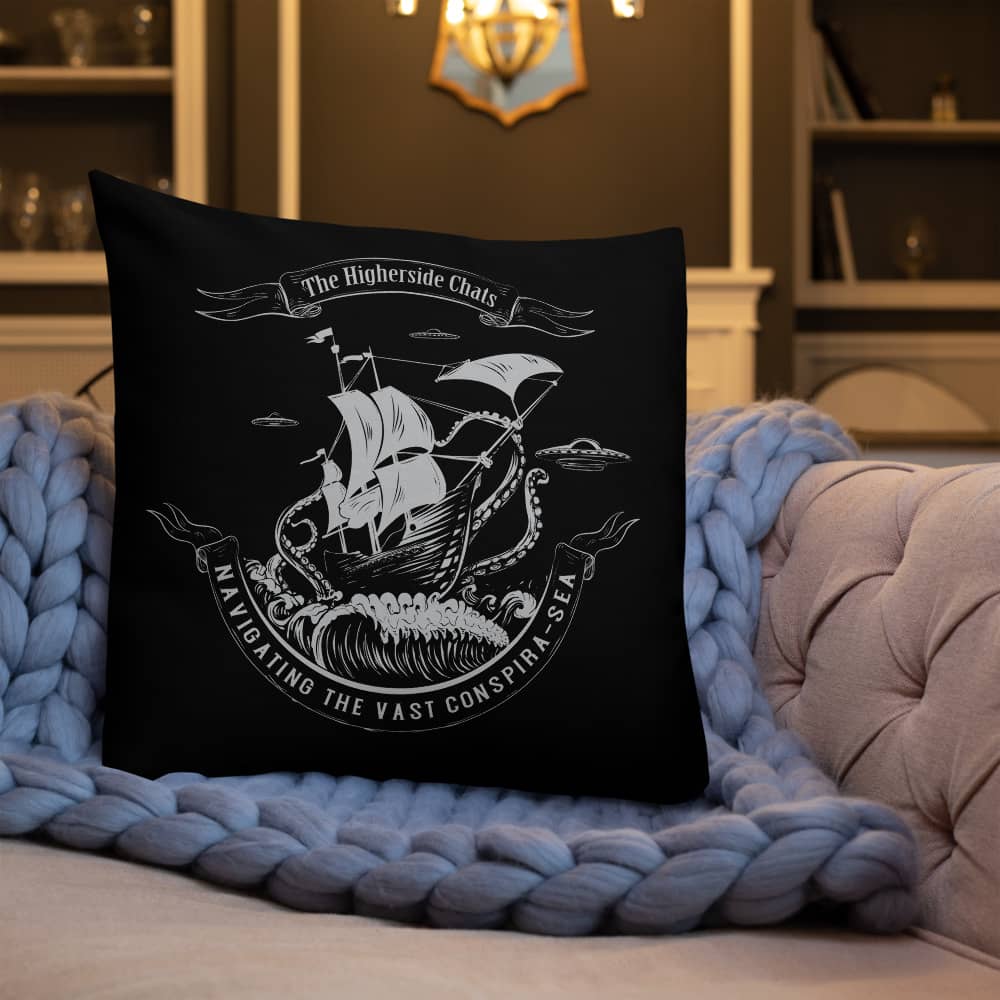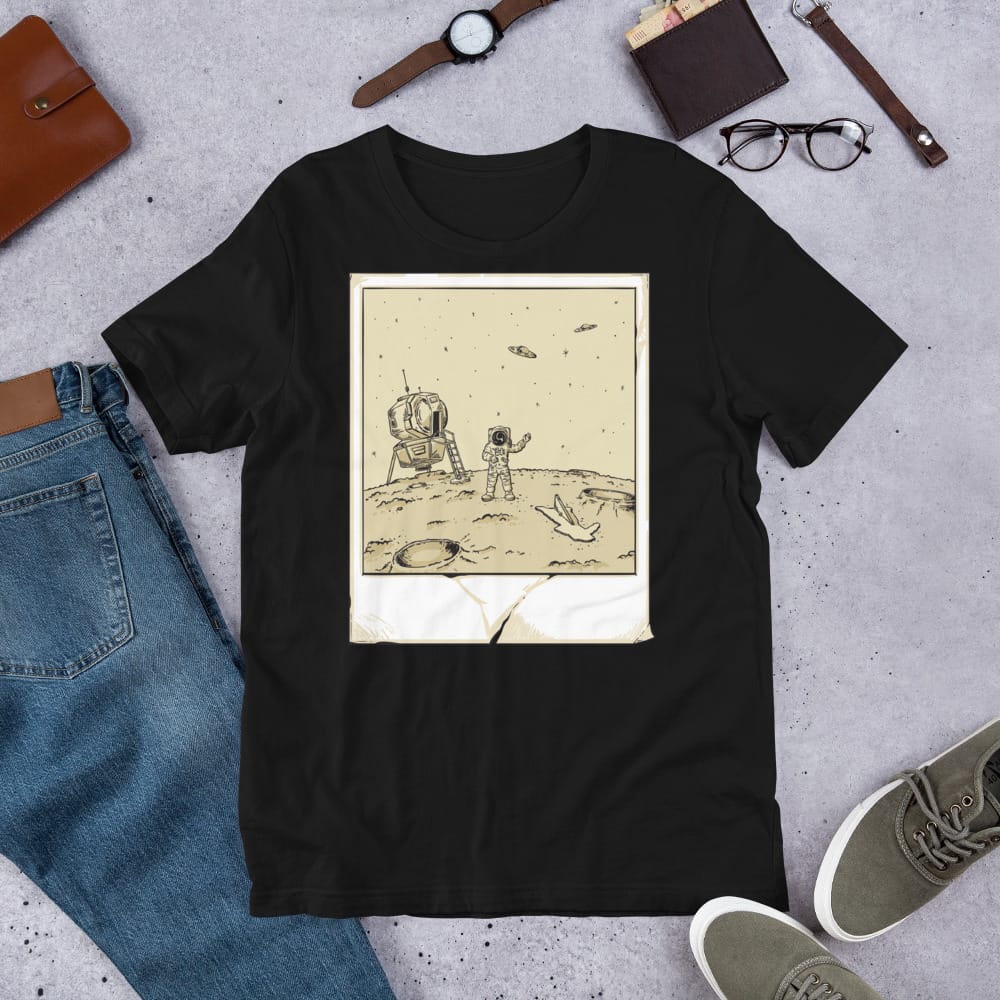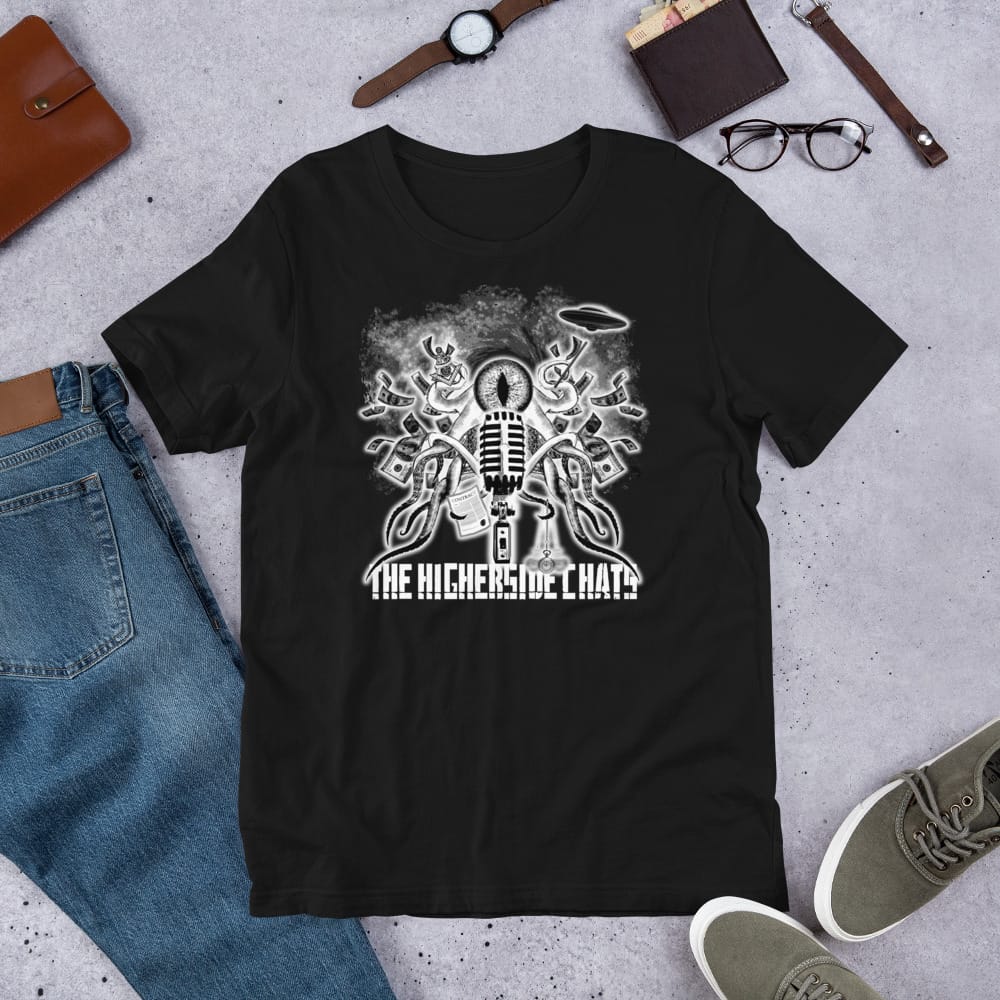Biomimicry & The Blue Economy
https://www.youtube.com/watch?v=LKS_nZP8LMM
Fellow THCs,
Like many listening to this show, I've been trying to shift my attention from the evil deeds of reptiles to trying to harness my potential for making positive change. I love the focus on magic and the mind for manifesting/attracting what you want.
Recently, I've come across the works of this Belgian entrepreneur-polymath Gunter Pauli who has done many work in what's now called The Blue Economy. While the color-scheme may sound like yet another marketing term, the Blue in here really refers to Ocean's exploitation and development with ethics and sustainability. From my understanding, it's similar to the way permaculture works by mimicking Nature's way towards abundance, or also the cyclical economy by using waste as an important capital to re-introduce.
It's all of those elements combined, and put into a responsible and entrepreneurial way.
Examples include:
- Growing fungi (mushrooms) out of coffee ground waste, which would otherwise go to landfill, or at best composting.
- Fly larvae culture on meat-waste from slaughterhouses, and organic wastes from warehouses/restaurants, that can then provide a nutritious (high proteins and minerals), energy-efficient and high-density (not lot of space required to do so) feed for animals, including pigs, cows, chicken and most importantly, fish farms (the latter which is currently fed corn, or smaller fishes contributing to over-exploitation), not to mention cosmetics (oils) and medical applications (larvae saliva is a great antiseptic for burn-wound treatment).
- Paper made out of stones (mining waste material) and plastics (HDPE, milkjugs). Huge savings on trees (none used) and water.
What I like about this is that, as it cliché as it can sound, it requires a fresh-eye to try to understand what resources you have available around you, and finding out the opportunities.
I always think in my head how vortexing water could be useful in any-type of situation.
Things like the mushroom culture using coffee grounds, which you can get for free from any Starbucks Coffee is an amazing project, because it turns any Starbucks (just to name the biggest Coffee store in the world), into a potential gold mine from which to make natural mushrooms from.
I won't bore you with specifics, but rather, I would encourage the curious entrepreneurial-minded folk to check his very last book, available for free Plan A: Transformation of the Argentinian Economy (Full book, PDF).
It's an incredible and ambitious plan to revitalize the economy and people of Argentina by making use of their rich, diverse ecosystem to become not only self-reliant, but also give people meaningful work that works in tandem with our Planet.
Many of his talks are available in French, some in English. If you understand French, I definitely recommend his talks with students where he talks about all the stuff above, including LiFi (Data thru Light).
Gunter Pauli is a fascinating guy which I had my suspicions at start given that he's a self-proclaimed Knight of Malta, worked with the Club of Rome and the World Bank to name just a few keywords that tend to sound alarms in this field.But yet, here's a guy who recognizes the breakthrough of vortex water, and frankly, just for that alone, I will give him the benefit of the doubt.
I think we could all use some inspiration in these rather chaotic times. Much peace, and hope this will attract some folks.
Some resources:
112 Cases of Innovating projects:
https://www.theblueeconomy.org/cases-1-to-100.html
Hempcrete: Cannabis to build carbon-negative homes
http://www.americanlimetechnology.com/what-is-hempcrete/
https://www.star2.com/food/food-news/2017/04/08/no-waste-from-growing-mushrooms-this-way/
I'm following up on this thread, because as you can tell, I'm fascinated by these novel solutions that are not just ideas, but have/are been in use for decades in many countries.
Since I'm a coffee lover, I decided to separate my coffee ground waste, and use them as a substrate to grow my experimental mushroom farm (shiitake in my case, although amanitas and other psylocibin varieties would be another milestone, perhaps one day!)
According to Gunter Pauli, one KG of brewed coffee waste can yield up to 100Kg of mushies. I'll keep you updated on the grow-up.
Also, I've talked at lengths about LiFi after I finished his latest book called "LiFi: Communication at the Speed of Light", outlining the history of Li-Fi.
I highly recommend the book if you can. But if you have spare-time, I would instead direct people to watch the 2hr-presentation below, done at Lingnan University in Hong Kong, which goes through many of these novel ideas (including LiFi).
https://www.youtube.com/watch?v=DxZJbYVC9F0
It's also very inspiring to see folks who are doing just that, while running a successful entreprise, like these guys in California (Back To The Roots).
I am about to move to Europe in the coming fall, so I can't really start a big project, but I believe this is where I can put my skills and curiosity to good use.
If y'all are interested, I can post more details as well.
Back To The Roots Mushroom Farming:
https://www.youtube.com/watch?v=BpRTUZpwYyk
https://www.jef.or.jp/journal/pdf/175th_cover04.pdf
Great post Enjoypolo. I totally agree, whatever we can do to help pollute less or recycle is good.
I'll just share some research I have done regarding concrete home construction in the absurd case i have enough money to build a concrete home someday rather than renting a section of a dilapidated Mcmansion or complex. I've been looking at aircrete with basalt fiber added to the mix and basalt-fiber/epoxy based rebar.
The advantages to aircrete are:
lower weight.
higher insulation.
fewer materials per unit volume.
the ability to create bricks, which can be cemented together later.
the ability to saw or modify the material with woodworking tools and use wood-screws.
less crack propagation across the cellular matrix.
The advantages to basalt fiber addition to aircrete (from what I have read in the 2% range by weight):
reduced cracking and increased strength.
The advantages to using basalt fiber rebar:
While more expensive by about 50%, potentially much longer structure life.
The above is due to zero rust after water migration into the concrete which will happen as the structure naturally ages and develops small cracks or holes.
Now while the above all sounds great it results in a thicker structure which is more prone to surface damage than concrete. If separate blocks are used rather than a single pour there are still potential crack propogation zones at the seams. The best way I have seen to deal with these issues is to use concrete-impregnated cloth (typically this is polyester-based, but I have thought that carbon fiber might be better, but hemp burlap, flax cloth, or coarse linen could be used with minimal loss in strength). After that your most abundant and non-toxic source of tree resin can be used to waterproof. This cloth shell acts to both protect the aircrete surface and act as a zone of tension relief which will drastically reduce crack propogation in the concrete which is best suited to compression stress.
Personally if I were to build a structure out of these materials I would want it to be an underground house and cover with 4-5 feet of earth for extra insulation, reduced ecological footprint, and thermal mass.
Here is a little video of someone doing this without the basalt additions, but with steel subframe for the pouring of aircrete:
https://www.youtube.com/watch?v=llsQL2bPWqY
Wow, I'm blown away by the video, thank you for this resource.
It does seem like a great complementary material in conjunction with hempcrete.
I've always dreamed of living in a house full of curves. And building underground seems like an additional layer for insulation.
Great inspiration!
https://www.youtube.com/watch?v=zzCXNlqDW6M
Watched this yesterday, and I have to say it's very inspiring to see this.
It reminds me of another resources talked about by Gunter Pauli, which is the transformation of waste glass to become foam glass, and used as an insulator material for home-building. I haven't dug in too deep into it (yet) but suffice to say it's just the tip of the iceberg.
I would totally see a combination of elements: hemp, aired-concrete, lime, glass, and other materials.
Foamglass (annoying bgm..):
https://www.youtube.com/watch?v=GhsZaA1uKYI
Hempcrete building
https://www.youtube.com/watch?v=9d_wsoZS6j0
Without going too much on a tangent, I do wonder about the idea of living a fungi house, pulsing with the beat of the mycelium kingdom:rolleyes:
Here is an article about possible 3D printed mycellium houses of the future:
https://www.dezeen.com/2014/03/06/movie-eric-klarenbeek-mushroom-roots-fungus-3d-printed-chair/
Unless you want to go full smurf:
shamangineer wrote: Here is an article about possible 3D printed mycellium houses of the future:
https://www.dezeen.com/2014/03/06/movie-eric-klarenbeek-mushroom-roots-fungus-3d-printed-chair/
O.M.G! this is beyond awesome. That's exactly what I had in mind, building bridges in such ways. I was originally inspired by the myco-foam packaging that IKEA, and other companies are starting to use to replace cardboard. Limitless!
Wow, even more awesome ideas by the same designer:
https://www.krown-design.com Grow your own furniture tool-kit.
Hobbit home in the UK:
https://www.youtube.com/watch?v=v5VZCjWjzhw
enjoypolo wrote: insight recently, that Li-Fi may be used to store data in Water. Gerald Pollack talked in his book, 4th phase of water, how water essentially stores energy by light (which would explain photosynthesis).
Not to mention that DNA uses photons to communicate, and we are mainly made of water : )
http://www.biontologywest.com/fritz-albert-popp
Wanted to share an article I finished writing about Blue economy & Mushrooming. Hopefully it can inspire others.
I've been expanding my myco-lab at home, but temperatures here have gone minus 0ºC, so mycelium is mostly dormant right now. Still, indoors, it's growing fairly well. For those interested, I'll be writing a follow-up article focused on my own experiences soon.
But go with Oyster mushrooms, or Enoki is great as well.
All I did was using a small jar, sterilize it with alcohol (your hands as well, or use gloves). Use the discarded stems from mushrooms used for cooking (e.g., oyster).
Put in the jar, and cover with brewed coffee-grounds from your morning brew (not too hot to kill the mycelium, but ideally not too cold either)
Spray with a bit of water, enough to create moisture, and cover with a lid (or plastic with holes for the mycelium to breathe).
Ideal growing temps are 15-21ºC. The ideal substrate is wood (wood chips, saw-dust) but also oats, or even fruit.veggie peels (after they've been boiled in a pot to sterilize).
I'm experimenting with various waste, including sea shells (calcium); wood blocks discarded from my workplace, as well as fruit peels.
If you see green growth, it's likely mold, so either discard it, or if its fully contamined, you may need to try again. Happened to me the first time, it's okay. In fact, Penicillin came from mold grown on a cantaloupe, so who knows what you could do with that!
Last but not least, some nice Japanese gourmet recipes using mushrooms:
https://www.justonecookbook.com/warm-mushroom-salad-sesame-dressing/
Putting this ebook from RotterZwam out there for anyone interested in mushroom growing.
https://zqjournal.org/editions/zq24.htmlI don't know if anyone would be interested, but the mycelium manufacturing company Ecovative just announced a Mycelium Design Contest.
The rule: create something, anything that solves a problem big, or small, using mycelium.
I haven't yet been able to "mold" using mycelium just yet (temps in Vancouver are still too low), but the thought of creating something useful with it has definitely crossed my mind. I had been thinking a myco-pot for plants would be a good start.
One thing that's I'm guilty of that bugs me, is using plastic utensils for take-out food. It's still cheap enough that many places use it (and quite frankly, it'd be painful without it) but there's gotta be a better alternative. Maybe Mycelium food trays or utensils (e.g., chopsticks, sporks) is one I've giving thoughts, which would be relevant for this contest.
If you're interested, I'd love to hear your ideas or take on it.
Of course, the thought of crossing Schauberger vortex designs and Mycelium is also in the back of my head.
Link: https://ecovativedesign.com/designbrief
EDIT: This is great free e-zine on Natural materials and the science of building things.
https://zqjournal.org/editions/zq24.html
- 44 Forums
- 3,497 Topics
- 15.8 K Posts
- 6 Online
- 22.3 K Members






